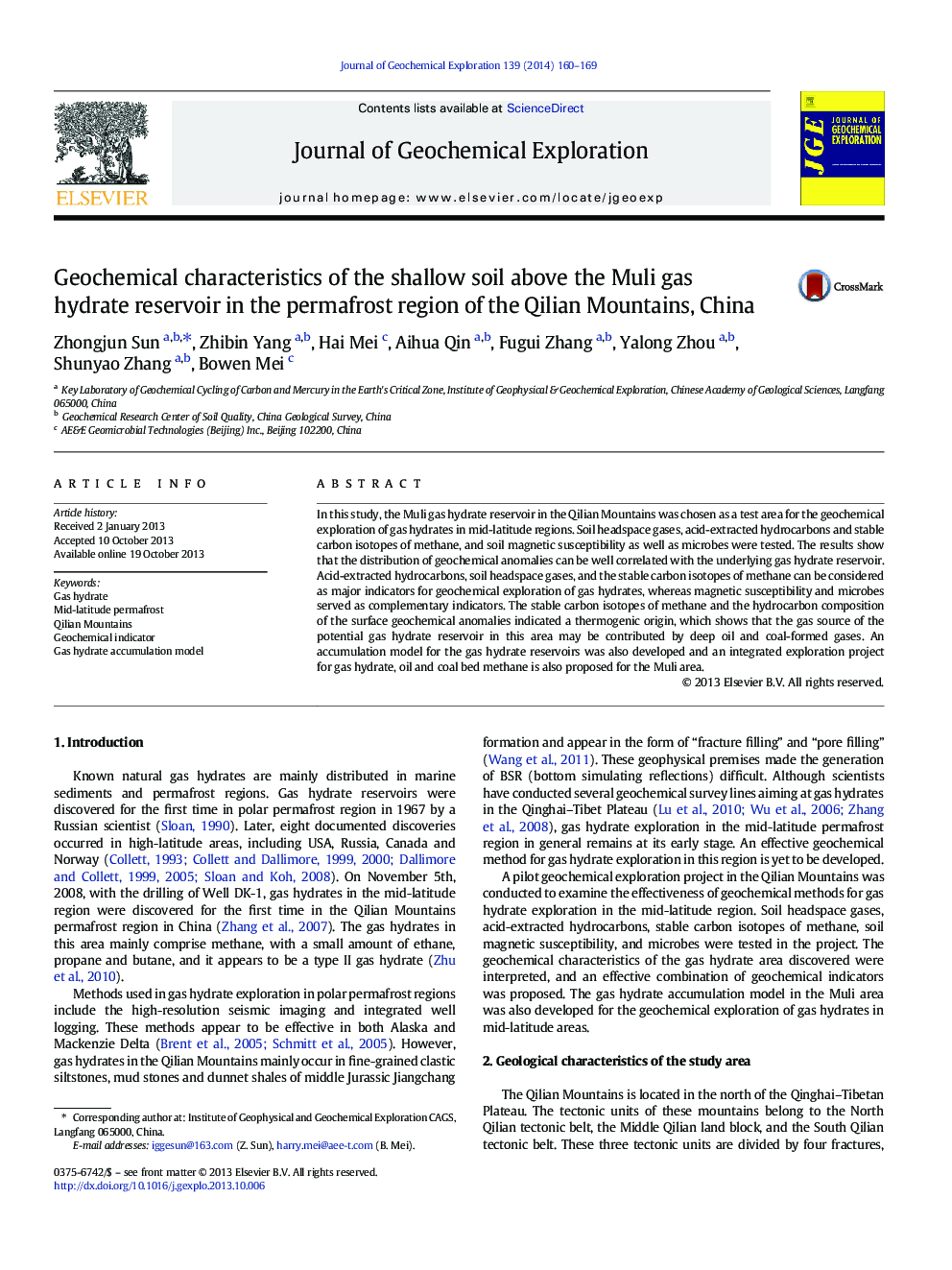| Article ID | Journal | Published Year | Pages | File Type |
|---|---|---|---|---|
| 6344716 | Journal of Geochemical Exploration | 2014 | 10 Pages |
â¢The study area is located on the Muli gas hydrate field in the Qilian Mountains.â¢Geochemical exploration techniques performed well in the delineation of hydrates.â¢Acidolysis hydrocarbon, headspace and carbon isotope were the major indicators.â¢The proposed accumulation model was also studied for the gas hydrate reservoir.
In this study, the Muli gas hydrate reservoir in the Qilian Mountains was chosen as a test area for the geochemical exploration of gas hydrates in mid-latitude regions. Soil headspace gases, acid-extracted hydrocarbons and stable carbon isotopes of methane, and soil magnetic susceptibility as well as microbes were tested. The results show that the distribution of geochemical anomalies can be well correlated with the underlying gas hydrate reservoir. Acid-extracted hydrocarbons, soil headspace gases, and the stable carbon isotopes of methane can be considered as major indicators for geochemical exploration of gas hydrates, whereas magnetic susceptibility and microbes served as complementary indicators. The stable carbon isotopes of methane and the hydrocarbon composition of the surface geochemical anomalies indicated a thermogenic origin, which shows that the gas source of the potential gas hydrate reservoir in this area may be contributed by deep oil and coal-formed gases. An accumulation model for the gas hydrate reservoirs was also developed and an integrated exploration project for gas hydrate, oil and coal bed methane is also proposed for the Muli area.
